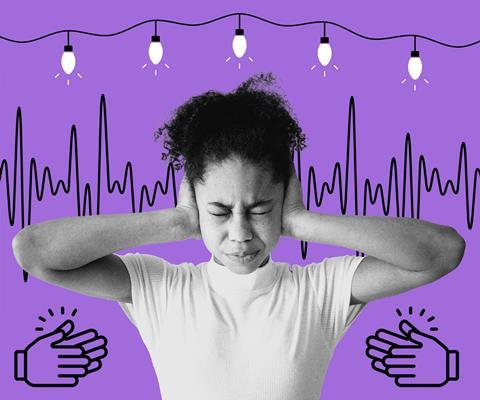Every child and young person needs support to help them learn or engage with activities. Some need additional or different support from those of the same age to ensure that everyone benefits from all they participate in. We want to address some of the important questions around these needs. Welcome to ‘All inclusive’.

Sometimes we think we see a child displaying challenging behaviour, yet if we take a moment to understand what is really going on we might find that it is something very different indeed. It might be that we are seeing a child who is overwhelmed with sensory processing difficulties and is unable to cope any more.
A child with sensory processing difficulties can react in ways that, at first glance, can be difficult to understand and explain. Their body is automatically reacting to their environment and their sensory input. If they become overwhelmed, this can create a ‘fight’, ‘flight’ or ‘freeze’ response. This can often be wrongly interpreted as bad or challenging behaviour.
Children with sensory processing difficulties can often feel overwhelmed and this can affect how they appear to people, seeming to be badly behaved or even aggressive. Sensory processing difficulties can also affect a child’s mental health, including anxiety, stress and depression.
An eight-year-old boy, let’s call him Timmy, had a variety of additional needs including then undiagnosed sensory processing difficulties. Timmy’s speech and language skills were very slow to develop and he would only be able to effectively communicate via speech from around nine years old. Until then, although he had other ways that he communicated, what he was communicating wasn’t always picked up effectively by others.
When Timmy was at home, and particularly when he was in the kitchen-diner area of the house, he would sometimes run screaming from the room or would drop to the floor wrapping his arms around his head. Sometimes he would knock things over or break things during these episodes. Nobody could figure out what was happening, and Timmy was labelled as having ‘challenging behaviour’ and even as being ‘attention seeking’.
When Timmy’s speech and language skills developed to the stage where he could effectively tell people what was going on, it turned out that he had been communicating though his actions all along, but no one had picked up on what he was desperately trying to tell them.
Behaviour = communication
What was happening was Timmy being totally overwhelmed by the sound of the fridge motor. If Timmy was in the kitchen-diner, the heart of the home where the family spent a lot of time, and the fridge motor switched on it was like someone taking a drill to Timmy’s head. He couldn’t bear the sound and if he could get out to the room he would; sometimes it would overwhelm him first and he would collapse to the floor in great distress.
Occasionally, as this was happening, he might accidentally knock something over or break something, even sometimes hit someone, but it wasn’t deliberate, he was desperate to escape the noise and couldn’t help what happened.
Once Timmy’s family knew about his sensory processing difficulties, they were able to help him better, to provide him with some ear defenders so that if the fridge switched on (or any of the other everyday items that Timmy struggled with like fluorescent tubes in shops and at church) he had the means at hand to protect himself.
Children with sensory processing difficulties usually fit into one of three categories (although at different times they can fit into any two or all three!): under-reacting, sensory seeking and over-reacting.
- Children who underreact can be quiet, withdrawn and difficult to engage in an activity.
- Sensory seekers need to wake up their senses in any way that they can. This may be by rocking on their chair, wandering around the room or fidgeting with something (or someone!).
- Children who overreact can become easily overstimulated and distressed by everyday things.
With (at least) eight different senses, three different ways of reacting and every child’s response being unique, there is not one solution to understanding sensory processing difficulties. However it is possible to build a sensory profile for a child that helps us to know what difficulties they may have and how to support them.
Changing the atmosphere
More generally, we can consider the programme we are running and the environment we meet in, to see if there are overall changes that can help everyone.
Is our programme heavily weighted towards activities that are sensory stimulating? For example, are there lots of loud games or songs? Is our environment cluttered and ‘busy’ with every surface covered? Could this result in some children overreacting and becoming overwhelmed? Can we provide ear defenders and split up the stimulating elements of the programme with calmer, quieter activities, as well as providing an uncluttered sensory safe space for children who might still sometimes struggle?
If we have children who are sensory seekers, can we help them to manage their senses without being disruptive by giving them a wobble cushion or gym ball to sit on, meeting their sensory needs in ways that work for them?
Perhaps we can help a child who underreacts by giving them ways to wake up their senses, such as some stretching exercises before they do some brain work, or by giving them some theraputty to squeeze or a stimulating fidget toy. They may need extra supervision to make sure they don’t accidentally injure themselves without realising it.
–––
With better understanding about our many senses and sensory processing difficulties, and with the right strategies in place, every leader can learn to make all that they do inclusive for every child and young person. Learning that behaviour is a form of communication is a great place to start.











































